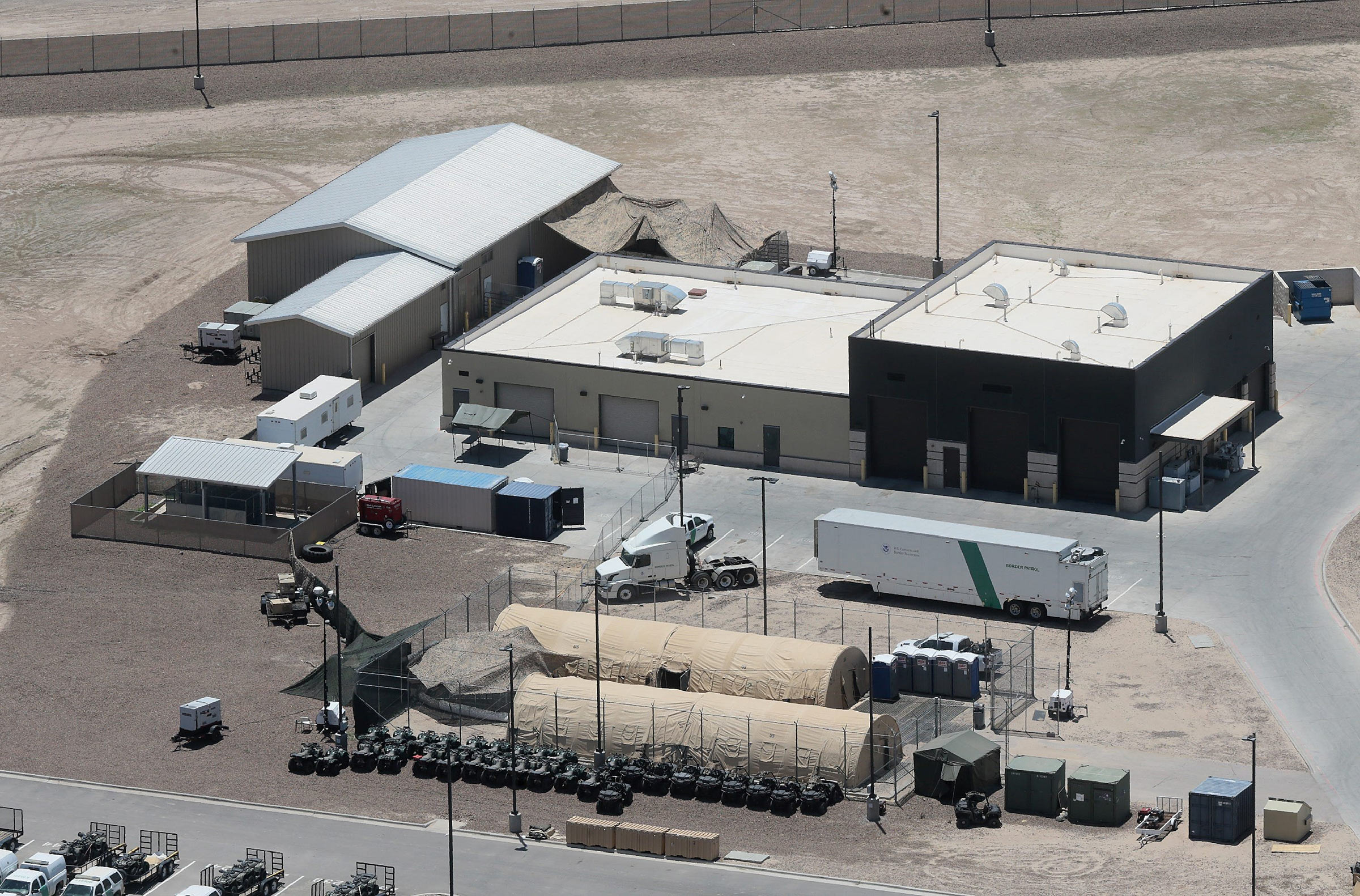
Americans love their children, agonizing about offering them a hopeful path to the future. But since the nation’s beginnings, we have been at once sympathetic to images of childhood and unkind in our treatment of “other” people’s children. For migrants at the southern border, this seeming paradox is playing out once again.
In late June, about a year after the Trump Administration officially ended its family-separation policy, a group of lawyers who visited a Texas detention center housing migrant youth were so appalled by what they saw–toddlers without diapers, older children taking care of younger ones, flu outbreaks–that they alerted the media. Since then, we’ve heard from others who have observed the situation at the border. A pediatrician told the Atlantic of kids with signs of trauma. The New York Times reported on children sleeping on the floor in overcrowded cells. A memo from the Department of Homeland Security’s inspector general described kids without access to showers or hot meals, though Administration officials have disputed such details. The U.N. High Commissioner for Human Rights said on July 8 she was “deeply shocked” by the conditions facing the children. If she looked to American history, she might be less surprised.
Children in America have long represented our humane beliefs in the promise of good treatment and careful nurture. We’ve paid homage to children as a symbol of our commitment to the possibilities of American life, and used our anger when children are wronged to satisfy our sense of doing right. At the same time, we have not viewed all children so charitably. We have historically been troubled by the disruptive potential of those deemed “other”–whether born elsewhere or not meeting some subjective ideal–and treated them as less worthy of protection, their access to unpatrolled family life as less sacred.
This story stretches back through the 1930s–when Jewish refugee children from Europe were blocked from the U.S.–to the early 19th century, a time when the children of the poor, the displaced and those from broken homes were pitied but consigned to lives of servitude. These were often the children of immigrants. Many were bound out as child laborers. Even people who were sympathetic to the poor and the outcast believed that children should be removed from the conditions that caused their poverty and placed in the households of others. Charity workers, though devoted to ideals of childhood innocence, usually took little note of why these families were not raising their children according to middle-class norms of leisure, play and schooling.
And, of course, throughout the first six decades of that century, it was in the very definition of slavery that children belonged not to their parents but to their masters, who could mistreat them and separate them from their kin. These American children made up over 10% of the child population of the U.S. in 1860. It was the genius of Harriet Beecher Stowe to seize on childhood innocence as a public value when she wrote the influential abolitionist novel Uncle Tom’s Cabin.
By the early 20th century, the sanctity of childhood had become even more elevated as an American ideal. The children of the poor and immigrants benefited from the shift: schooling was required of all, and newly professionalized social workers, as well as nurses with the U.S. Children’s Bureau and other reformers, paid attention to their health and housing conditions. Even so, immigrant children with tuberculosis or eye diseases, and those suspected of having intellectual disabilities, could be and were separated from parents at ports of entry like Ellis Island. Nor were those already here spared: Native American children were routinely separated from their communities to be sent to boarding schools where they were supposed to learn to become “Americans.”
Today, as many show outraged virtue over the treatment of children, it would be an error to look to history in the belief that we are and have been better than this. But if we look instead to our ethical or religious foundations, that past can still serve a purpose: it can show us just how much there is to rise above.
Fass is the Margaret Byrne Professor of History Emerita at the University of California, Berkeley, and the author of The End of American Childhood
More Must-Reads from TIME
- Donald Trump Is TIME's 2024 Person of the Year
- Why We Chose Trump as Person of the Year
- Is Intermittent Fasting Good or Bad for You?
- The 100 Must-Read Books of 2024
- The 20 Best Christmas TV Episodes
- Column: If Optimism Feels Ridiculous Now, Try Hope
- The Future of Climate Action Is Trade Policy
- Merle Bombardieri Is Helping People Make the Baby Decision
Contact us at letters@time.com